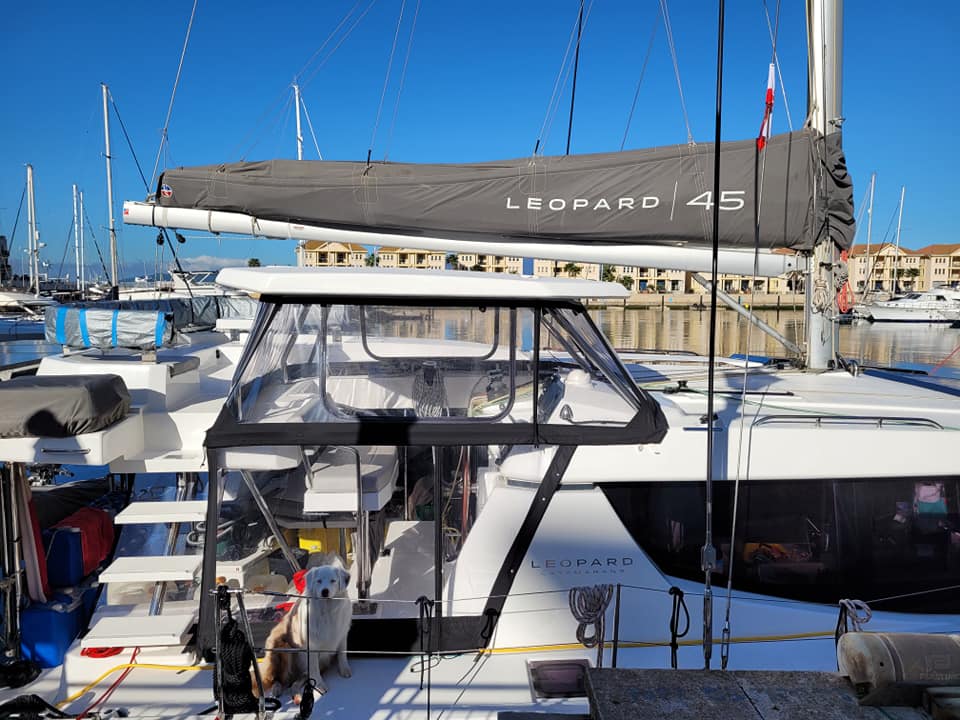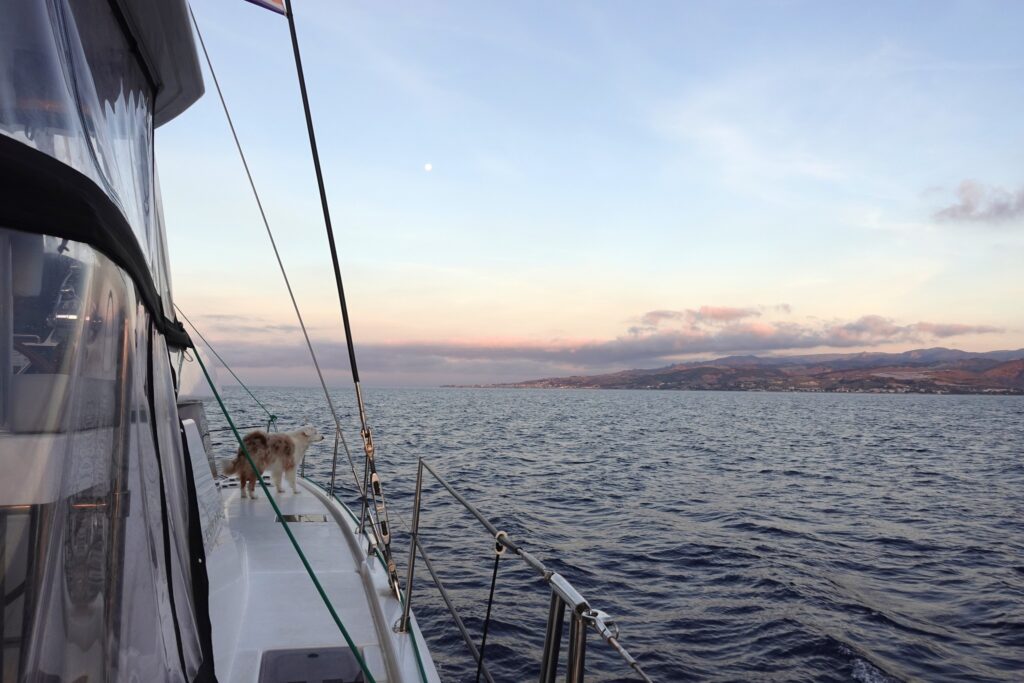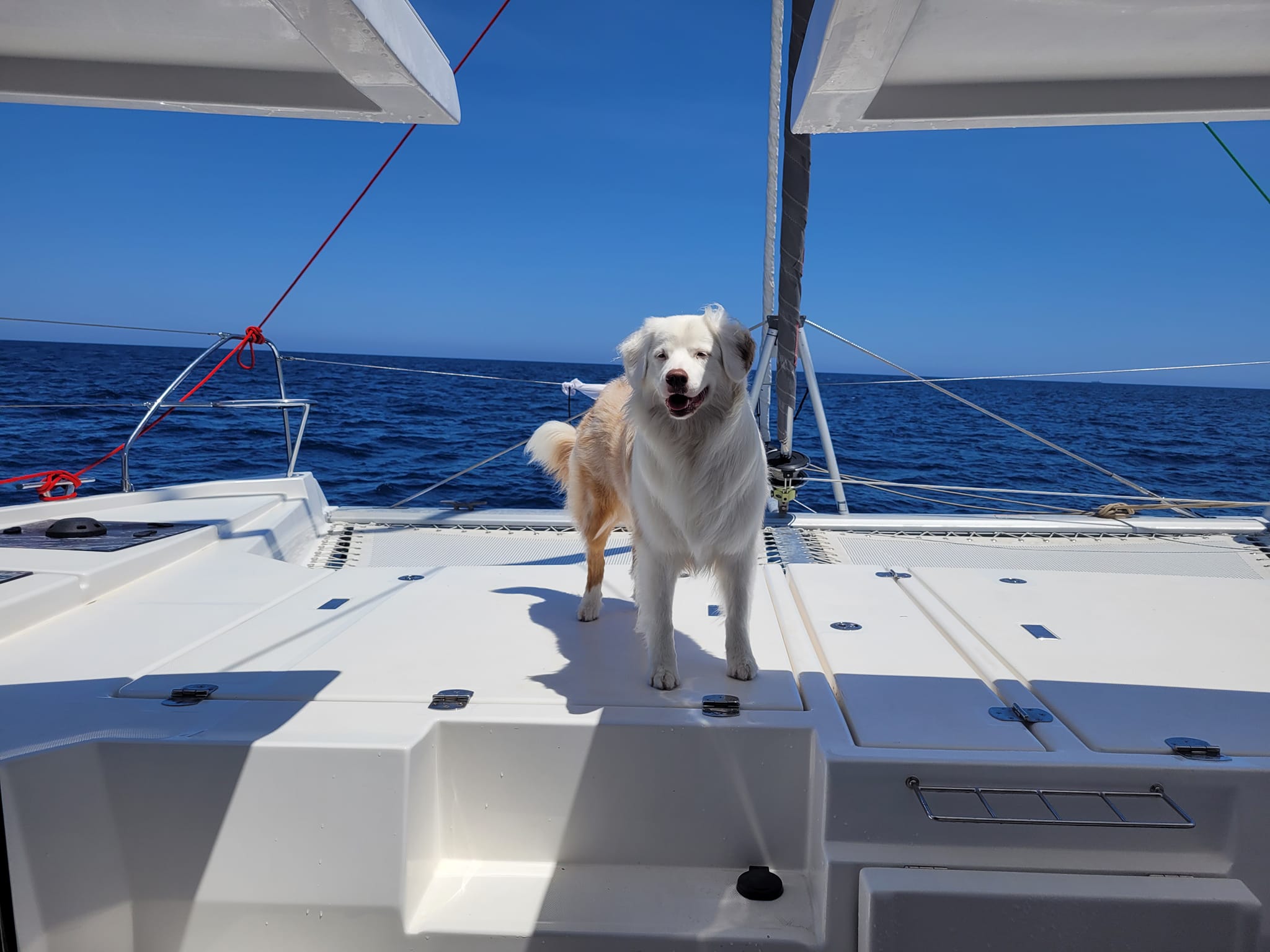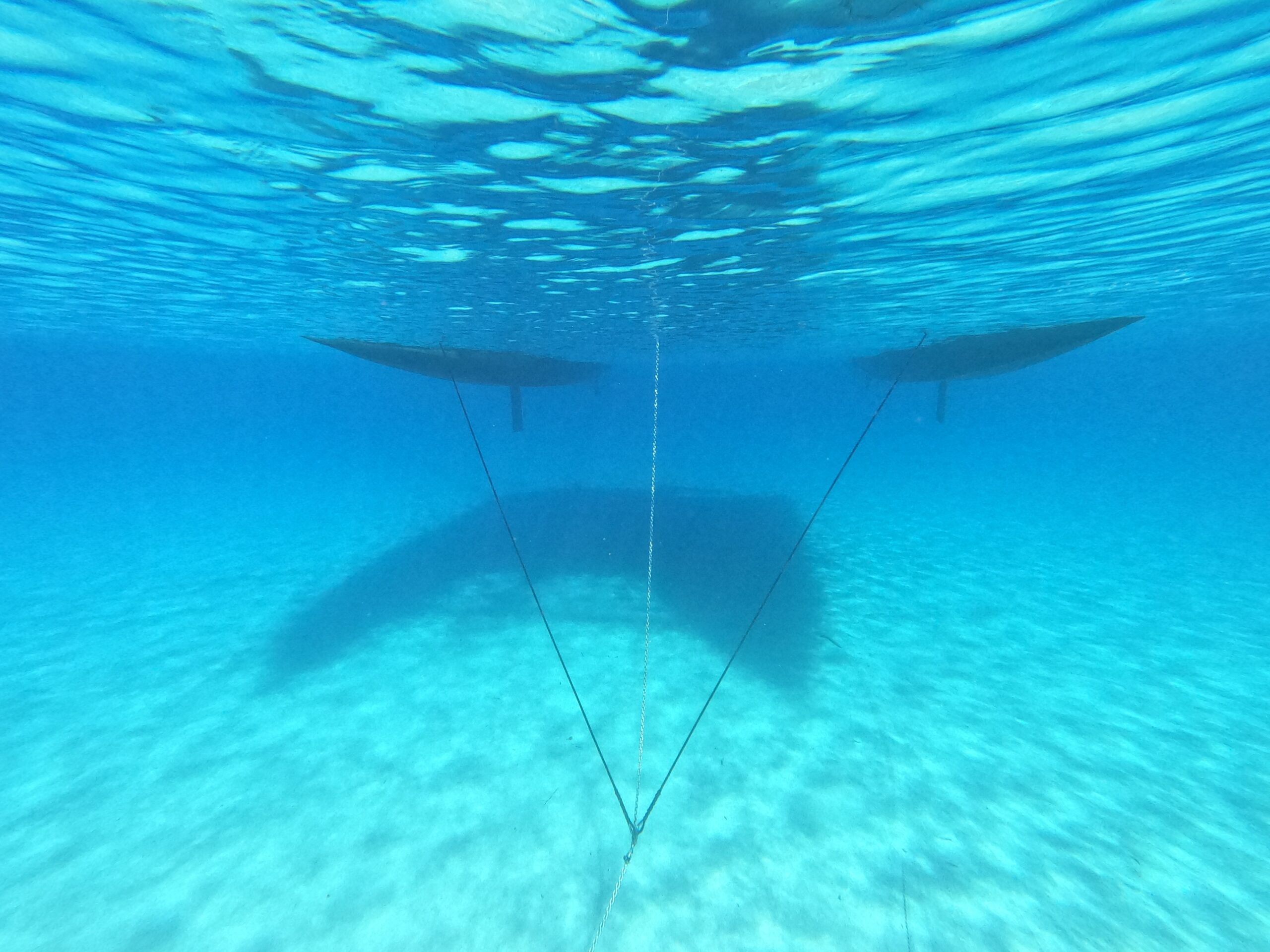Back in the planning stages of live aboard life one of the decisions we made was whether or not to get a dog. We knew our plans would have us living aboard a yacht for most of the dog’s life and that having a dog would have implications on how we travelled. Here’s an insight into what our experience of living with a dog aboard has been like.
After much consideration our crew came to a decision, and a few months later an Australian Shepherd named Rose came into our lives. Rose has now been living on the boat for almost two years and while there are challenges, we wouldn’t have it any other way!
Daily exercise
As an Australian Shepherd, Rose needs a lot of exercise. Knowing that drives us to get out and explore the places we sail to. She’s walked through historic sites, hiked up mountain trails, swum under waterfalls and joined us when we’ve eaten out. During these adventures the dog tends to be an excellent ice-breaker and as a result we’ve had conversations and gained local insights into places that we probably wouldn’t have if we didn’t have the dog with us.

Pet importation and entry procedures
Entering countries can be more difficult with a dog and as a result it can impact your cruising grounds. Many places require you to have a pet permit which generally means submitting a set list of vaccination and testing records to the authorities and paying a fee.
Personally we found travelling around Europe relatively easy, especially because I had organised a European pet passport for Rose when we first arrived. I have heard good feedback about the French Caribbean islands having simple procedures and in some locations like the Bahamas there are reputable local agents who can help for a small fee. Trinidad and Tobago, Australia, Japan and French Polynesia are among some of the more complicated destinations that we’ve looked into, but even they are doable with careful planning.
Long passages
We’ve done a couple of longer passages with Rose aboard, including sailing across the Atlantic Ocean. Given how much energy she usually has, many would assume she’d go stir crazy being confined to the boat for that long. In reality she slept most of the way. During the day we would take her out on the deck as often as we felt like for a little play, and dolphin watching became one of her favourite activities. A few times when it was calm enough, we shut the boat down and drifted while she had a swim off the back. It’s not something we would have done for ourselves, but we absolutely took turns joining in!

Toileting on a boat
Something people are curious about is how and where the dog toilets on the boat. Rose has a large, polished aluminium dish that one of the crew welded together. It’s lined with astroturf and lives on the trampoline. Once a day it gets thrown over the side to soak, and as a result we’ve not had any problems with smells. Rose is more than happy to use the dish to the point where it has to be stored upside down on the hardstand to prevent her using it when she’s too lazy to walk downstairs to the grass.
Cleaning
I strongly suspect that we vacuum our boat more often than most, especially during temperature changes that cause Rose to shed more fur than usual. She has a double coat so shaving isn’t an option, instead we brush her regularly with a fur rake to try to minimise shedding. We find that swimming and regularly washing her with fresh water also helps as the water knocks loose hairs out. For cleaning our vacuum of choice is a workshop vacuum that’s powered off the same 18V batteries as our power tools. It’s compact and easy to use which is great for boat life.

Leaving the boat
One thing that becomes logistically difficult having a dog is when you want to leave the boat and fly home. We’ve flown Rose once when we needed to get her from Australia to Europe. The process itself wasn’t too hard, but it was very expensive.
For us this logistical hurdle is easier to manage as we have three people aboard and there aren’t many foreseeable circumstances where we would all need to leave at once. As a couple or family, it’s more of a consideration. Some cruisers we’ve met organise for someone to come and dog sit on the boat while they’re away or leave them in the care of a local kennel. Others chose to fly them home with them, especially if they know they’ll be gone for a while.
Keeping the dog safe
As a responsible dog owner it’s important to put things in place to help keep the dog safe while living on the boat. One area to address is how the dog can get back aboard if they fall or jump overboard.
Before moving onto our Leopard 45 we had big ideas for a custom made floating dog ramp to hang off the back of the transom when we were at anchor. Turns out we didn’t need it; during her first supervised swim Rose just climbed up the ladder. It’s a useful skill for bigger dogs to have but there are also many ramp solutions on the market so you should be able to find something to suit your dog and boat.
The other dog overboard scenario is them falling while underway. Some owners install netting along the edge and there are some good dog life jackets and pet MOB devices out there. Personally we have done dedicated training on behaviour when underway and anytime the dog is allowed outside the saloon there is constant supervision. We also sat down as a crew and clearly laid out our dog overboard procedure, as it is slightly different to man overboard.
Overall thoughts
Having a dog aboard requires effort and commitment, and isn’t something that should be entered into lightly. That being said, it can also be incredibly rewarding and personally I wouldn’t have it any other way. If you’re considering having a dog aboard your boat there is a supportive community of other pet owners out there, with various groups on social media and in noforegnland’s Pets on board group who are willing to offer advice.











One Comment